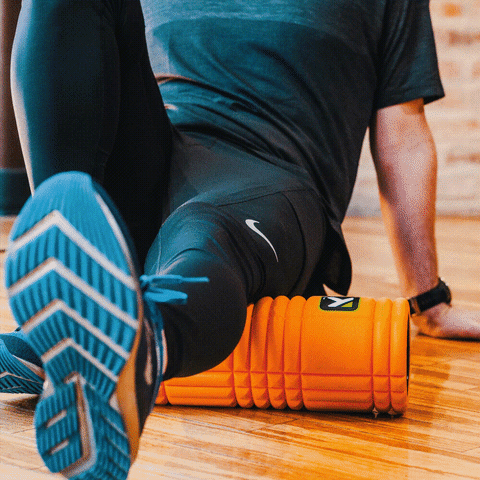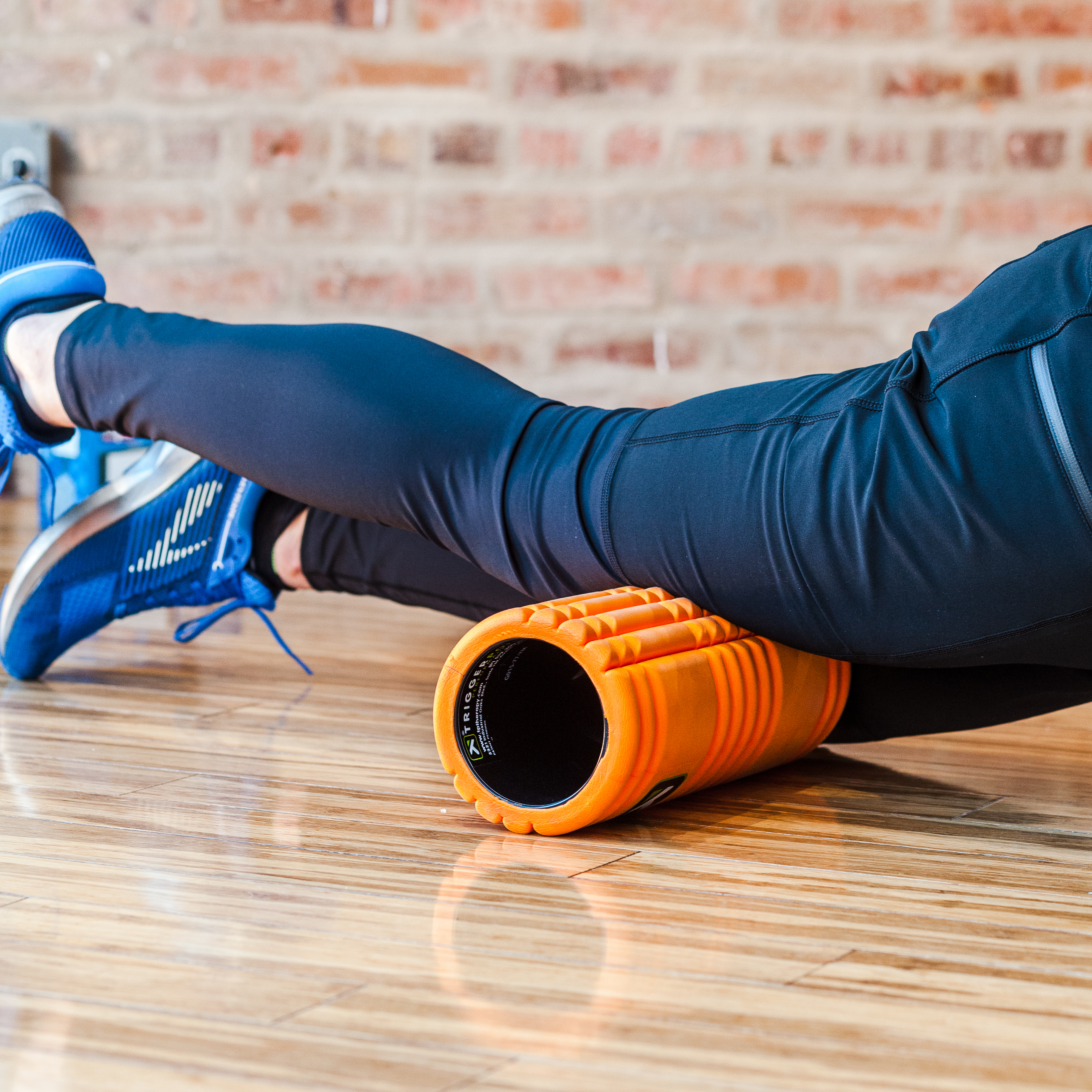Foam Rolling: Where It Works Best, Example Exercises, and When to Go to the Doctor

Foam rolling. Everyone's doing it.
Elite athletes and runners are swearing by them, non-runners are even finding out the benefits of them, and this woman from Self Magazine even said her life will never be the same since she took a foam rolling class. It's 2018 and there's no denying that foam rolling works.
There's even science behind it. In this article we explain everything there is to know about foam rolling.
Let's get started.
What is a foam roller?
The clinical definition of foam rolling is as follows "the act of foam rolling involves using one's own body weight as pressure across a cylindrical object in an effort to change the state of the body's tissues. The type of foam roller can vary from a less dense type of foam that conforms around the body, to a highly dense foam roller that allows no conformity.
Basically, a foam roller is a recovery tool to help go in and break up adhesions that form in muscle tissue to reintroduce some elasticity and flexibility to muscles.
What does a foam roller do?
In short, it helps with elasticity and flexibility back into the body, which can help improve range of motion, help reduce muscle soreness, and prevent extra stress and strain placed on the body that can lead to overuse injuries.
The long answer would be to describe what happens what someone foam rolls. When compression is applied, blood for particular tissues will first be obstructed, and when pressure is removed, blood flow to help facilitate the healing response of the body. This is known as myofascial release. It can also be used to introduce movement to "stuck" tissues. Due to a variety of factors, the connective tissues in the body, which should slide across each other, begin to develop adhesions, in which the muscle fibers stick together.
When does foam rolling work best?
There are two application of foam rolling: pre-workout and post-workout.
Pre-workout foam rolling acts as a dynamic warm-up by preparing tissues for the upcoming demand of a workout. Foam rolling beforehand helps increase tissue tolerance, optimize length-tension relationship, make for more efficient movement, increase force output, and decrease heart rate.
Post-workout foam rolling is done following a workout and ideally within 5-45 minutes after your workout. This serves as an effective cool-down method upon completion of exercise. Post foam rolling consists of a more total body flushing method to help promote circulation of metabolic waste. Most importantly, it helps flush out the tissues and helps start the recovery process known as DOMS, or, delayed onset muscle soreness.
What are the best areas to use a foam roller?
Anywhere there is muscle soreness but for most folks it's going to be the following:
Upper Leg: hamstring, quadricep, IT band): Most people spend a large portion of their day sitting. When the knees are bend and the feet are relaxed out in front, the calves are in a shortened position.
Lower Leg (shin, calf): Similar to the calves, the quadriceps are very powerful and active muscles. Since they are involved in almost all activities, especially running, and due to sedentary positioning they can become overactive and shortened.
Posterior Hip (buttocks): When seated, all of the gluteus muscles become over stretched and smashed together. This often causes the muscles under the glutes to have to work harder in an effort to maintain force production. Foam rolling on the glutes and underlying muscles can help to restore blood flow and reduce over activity of small muscles.
Mid to Upper Back: Poor upper body posture can be associated with improper breathing and a lack of proper movement through areas of the spine. Foam rolling can help restore movement to this region.
Chest: When posture disrupts breathing, the pectorals can become overworked by trying to lift the rib cage during breathing. Foam rolling through the pectorals can assist in relaxing the muscles and reducing tension.
While foam rollers are exceptional at massaging these large muscle groups, a handheld massage stick, in combination with a foam roller, can help precisely pinpoint smaller muscle groups. And it's portable.
What are some example foam rolling exercises?
We thought you'd never ask. We tapped into the professionals at TriggerPoint to find you our top three exercises to help prevent injury, speed up healing, and improve blood flow.
Using a TriggerPoint GRID foam roller to massage your quadriceps.
Using a TriggerPoint GRID foam roller to massage your calves.
Using a TriggerPoint GRID foam roller to massage your IT Band (iliotibial band).
What is the difference between tightness/pain and injury/pain?
The next two questions were the most common questions our social media followers asked us. To answer it, we reached out to the professionals at Aligned Modern Health. According to Vince Roberts, Director of Physical Medicine, there are two things to consider when it comes to pain. Quality and intensity.
The pain of training hard or dealing with minor tissue stresses is one of a dull soreness or ache, and it usually will dissipate within a short period of time (1-3 days). These symptoms will usually be rated at less than 5 out of 10 for intensity, although all people vary in their experience of pain.
The pain of injury is most often one of sharpness, stabbing or even a burning sensation that does not dissipate easily and could last days to weeks. These symptoms will usually be more intense, being rated more in the 5-10 out of 10 pain intensity.
When should I see a professional?
When the signs are there – sharp or burning pain that interferes with normal functional recreation, often with an intensity rating of 5+ out of 10, is a good time to stop what you’re doing and get it evaluated.
We all want to get back to running sooner, so don’t let injuries fester or stick around too long; a visit to the doctor can reveal a lot of things you’re unaware of. Understanding an issue’s cause, and not just the pain that arises as a result, can lead to quick recovery times and less risk for future injury.
If you feel the need to seek professional help, feel free to reach out to Aligned Modern Health at www.alignedmodernhealth.com

Connect With Us
See the latest from Fleet Feet Springfield